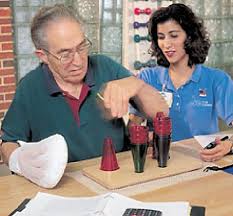Upper Extremity Stroke Rehab CEU’s.
NeuroRehab Team
Monday, August 29th, 2016

Stroke Recovery By The Numbers
Arm and hand recovery continues to be a major problem following neurological injury. According to scientific data, fifty-percent of stroke survivors are likely to regain some functional use of the upper limb (Broeks JG et al. Disabl and Rehabil, 1999).
Find Arm and Hand NeuroRehab Courses
Forty-one percent of all patients had limited hand use at 3 months and 45% at 18 months after stroke (Welmer AK et al. J Rehabil Med, 2008). At 6 months post stroke, some dexterity was found in 38% and complete functional recovery was seen in 11.6% of patients (Kwakkel G et al. Stroke, 2003).
The latest research shows that the brain is capable of rewiring and adapting after stroke. To improve function in the upper limb, the client must be willing to incorporate the affected side purposefully, functionally, and repeatedly. In addition to functional training, other evidence-based strategies include strength training, mental imagery, robotics, and gravity compensation.
The American Occupational Therapy Association's (AOTA's) Approved Provider Program (APP) assists occupational therapy practitioners (OTPs) and state licensing boards to ensure professional development activities reflect evidence-informed, occupation-centered practice. AOTA Approved Providers demonstrate they have the systems, policies, procedures and educational practices in place to adhere to the APP Guidelines and Criteria.

The above courses are evidence-based courses that review the latest information when it comes to stroke recovery. To search for stroke rehab exercise tools, visit here get started.

